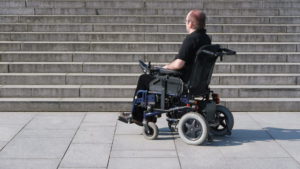Written by Mackenzie Saunders:
Sustaining a spinal cord injury is a life-changing event. When people think of spinal cord injuries, they typically only think of paralysis. However, spinal cord injuries (SCIs) not only lead to paralysis, but SCIs lead to many other challenges that can affect someone’s day-to-day life. Read below to learn about the many challenges that result from experiencing a spinal cord injury.
Health Conditions
Spinal cord injuries often result in paralysis in the legs, torso, arms, and/or neck. However, there are many other health conditions that accompany spinal cord injuries (SCI). For example, people with SCI are often unable to regulate their body temperature below their site of injury, which can lead to many health complications. People with SCI are also often unable to control their bladder and bowel movements independently, which may lead to conditions such as UTIs, bladder stones, and constipation.
People with SCI are also prone to autonomic dysreflexia, which is a quick spike in blood pressure that can lead to a stroke. Autonomic dysreflexia causes people to experience nausea, hypertension, headaches, anxiety, and other symptoms.
These health complications can affect someone’s daily life in a huge way. Secondary conditions can prevent someone from holding a job and living a safe, healthy life. It is important to look out for these secondary conditions after sustaining a SCI so you can closely monitor and take care of your health.
Physical Barriers
People with SCI don’t just experience health complications; they experience constant physical barriers in public and private settings. Many people who sustain spinal cord injuries utilize mobility aids such as powerchairs, manual wheelchairs, and leg braces. People who rely on mobility aids for transportation often need accessibility features such as elevators, ramps, and accessible restrooms. When a space lacks these accessibility features, people with SCI can experience barriers to participating in different settings.
Physical barriers can be discouraging, demoralizing, and exclusionary. Physical inaccessibility is just one of the many challenges people with SCI face on a daily basis.
Cost of Living
The unfortunate reality of sustaining a spinal cord injury is that SCIs are incredibly expensive. People with SCI often rely on services such as caregiving, daily medicine, weekly doctor’s appointments, home modifications, and medical equipment—and all of these services cost money. Many are forced to pay for their SCI expenses out-of-pocket, meaning that their cost of living is much higher than people without SCI. The daily expenses of living with a spinal cord injury present many challenges to people with SCI, including financial instability.

Don’t Lose Hope
Living with a spinal cord injury can be incredibly challenging due to health conditions, physical barriers, and costly SCI expenses. However, this does not mean that people with SCI should lose hope. Living a safe and healthy life after sustaining a spinal cord injury is possible if you have the right resources and support.
Living with a spinal cord injury may be challenging, but it is not impossible. If you have sustained a spinal cord injury, contact The Spinal Cord Injury Law Firm at 1-877-SCI-FIRM for a free legal consultation. We offer support and guidance for those who have sustained catastrophic injuries, and we will fight for you to receive the justice, resources, and compensation you deserve.


